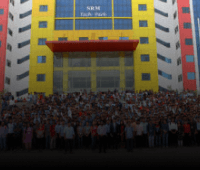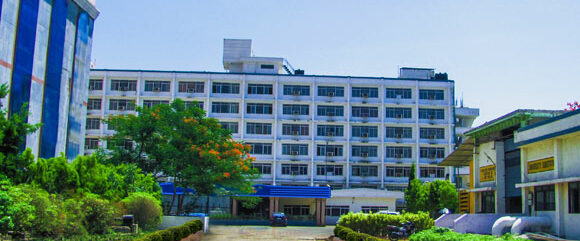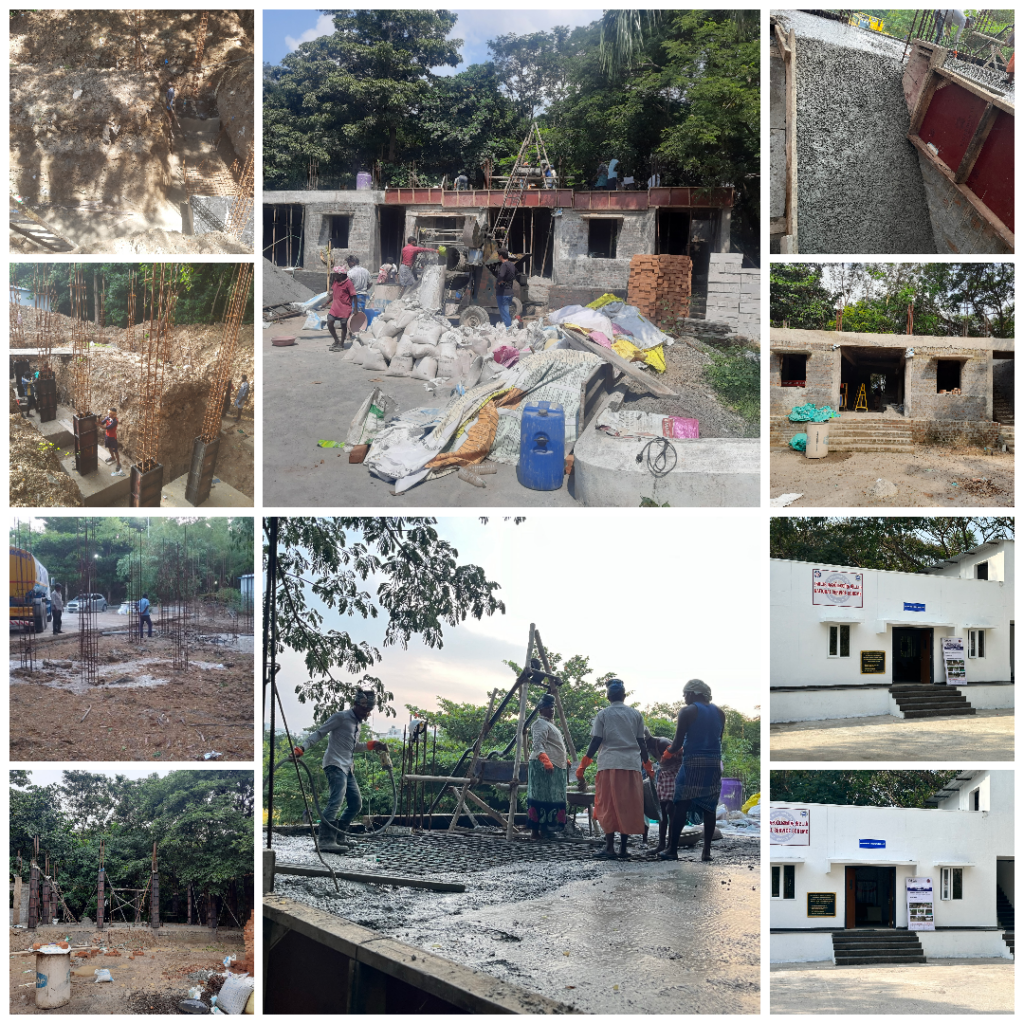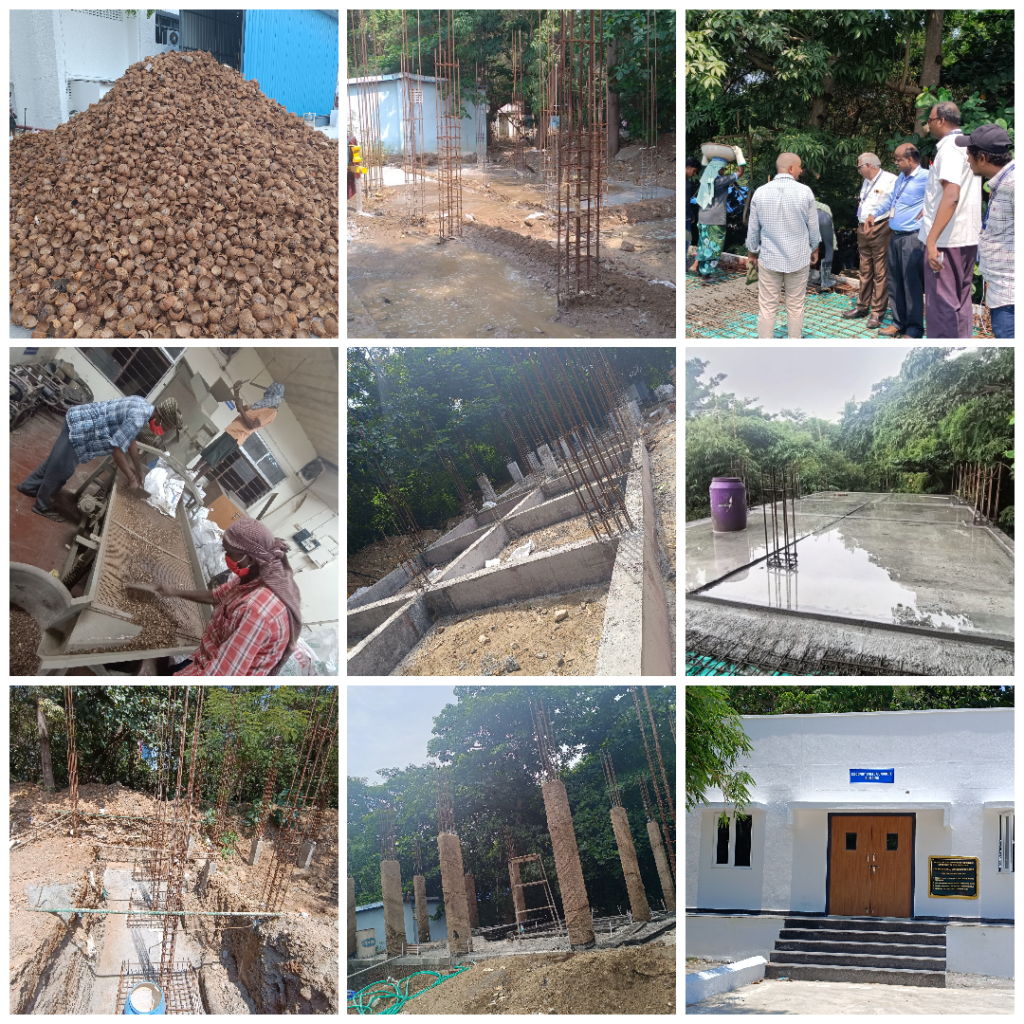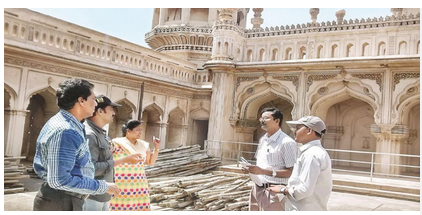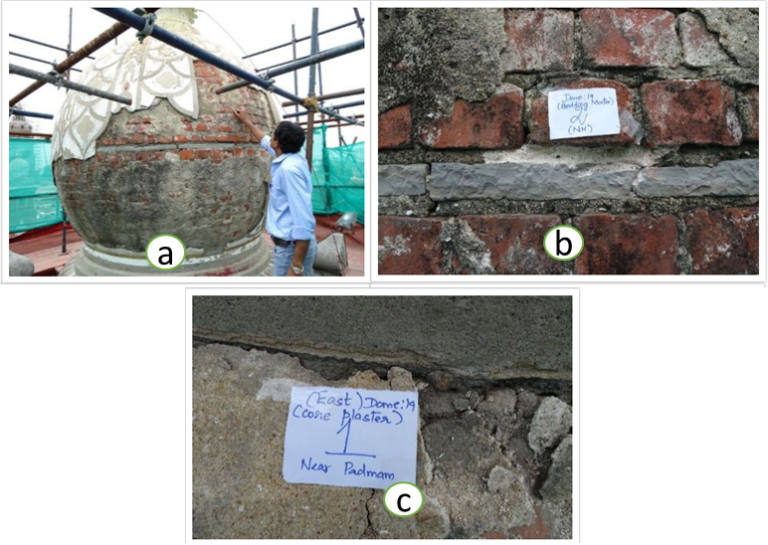Geopolymer (zero Cement) Concrete Building - A Sustainable Construction
Geopolymer Concrete is a zero cement concrete which replaces cement by industrial byproducts such as flyash, GGBS along with Sodium Hydroxide and Sodium Silicate as alkali precursors and other constituent materials such as M Sand and Coarse Aggregate. Geopolymer Concrete helps in reducing global warming and CO2 emissions which are produced during cement production process. The Targeted Compressive Strength of 30 MPa has been achieved in 14 days with only ambient air curing (no water curing) in this construction. The cost of geopolymer concrete is almost similar to conventional cement concrete. Following Three Sustainable Goals has been achieved while constructing this building,
- Goal 9 – Build resilient infrastructure, promote inclusive and sustainable industrialization and foster innovation.
- Goal 11 – Make cities and human settlements inclusive, safe, resilient and sustainable.
- Goal 12 – Ensure sustainable consumption and production patterns.
Advantages of Geopolymer Concrete is that there is no need of water curing, no cement used, strength can be achieved in shorter period of time.
Coconut Shell Concrete Building - A Sustainable Construction
One of the disadvantages of conventional concrete is the high self-weight (Density). By using suitable aggregates, the density of concrete can be reduced. Coconut shell, one of the agricultural wastes, produced in abundance and has the potential to be used as aggregate in concrete. Coconut shell, which is a naturally occurring waste material, has been used as aggregate in this building by replacing entire conventional coarse aggregate. The use of coconut shell aggregate resulted in the reduction of self-weight of the structure by 20%. The use of alternative aggregate has become a need of the hour for the construction industry because of the economic, environmental and technological benefits derived from their use. Wherever abundant agricultural and industrial waste is discharged can be used as potential alternate material for the construction industry. In this building, the compressive strength of the coconut shell concrete used was M25. Coconut shell concrete provides more ductility, has better insulation against heat and sound compared to conventional concrete which is more beneficial for earthquake resistant and blast resistant structures. The following three Sustainable Goals have been achieved while constructing this building,
- Goal 9 – Build resilient infrastructure, promote inclusive and sustainable industrialization and foster innovation.
- Goal 11 – Make cities and human settlements inclusive, safe, resilient and sustainable.
- Goal 12 – Ensure sustainable consumption and production patterns.
Ready Mix Organic Lime Mortar - sustainable building Innovations
Generations have studied the possibilities of lime, which has been used for ages. Due to the material’s minor drawbacks, it has been forgotten. In India, lime mortar was traditionally made by combining lime, sand with different organic ingredients depending on the region. Finding all of these components today and keeping their proportion on the job site might be challenging. Furthermore, unlike cement mortar, which is prepared “by hand,” lime needs to be blended, kneaded with sand in a grinder. We provide ready-mix lime mortar as a means of avoiding these inconveniences. Original product of lime mortar which is same as the mortar used before 1000 years. It is a high quality grade of Ready Mix Organic Lime Mortar. The mortar is well-processed with the help of traditional techniques. The mortar shall be widely used at the constructional sites with varied significant features, especially for the restoration of heritage structures.
In addition to being simple to apply, our traditional lime mortar is compatible with the original structure. The typical breathing performance of historic buildings must be maintained, which depends on it being soft, porous, and flexible. Age brings out an artistic quality in lime mortars. It is also excellent for newly constructed additions that are intended to blend in with the existing structure. The product maintains the building’s “breathability” and beautifies the character of the brickwork in an attractive way, compatibility with the historic building structure, The most significant characteristics of this material is its ability to absorb carbon from the atmosphere. We also offer a variety of lime plasters and renders for modern, sustainable/green, and historic buildings.
The following three Sustainable Goals can be achieved while using this material,
- Goal 11 – Build sustainable human settlements with reduced carbon levels in the atmosphere.
- Goal 12 – Guaranteed sustainable consumption and production process that ensures carbon abatement.
- Goal 13 – Reduce carbon content from the environment


